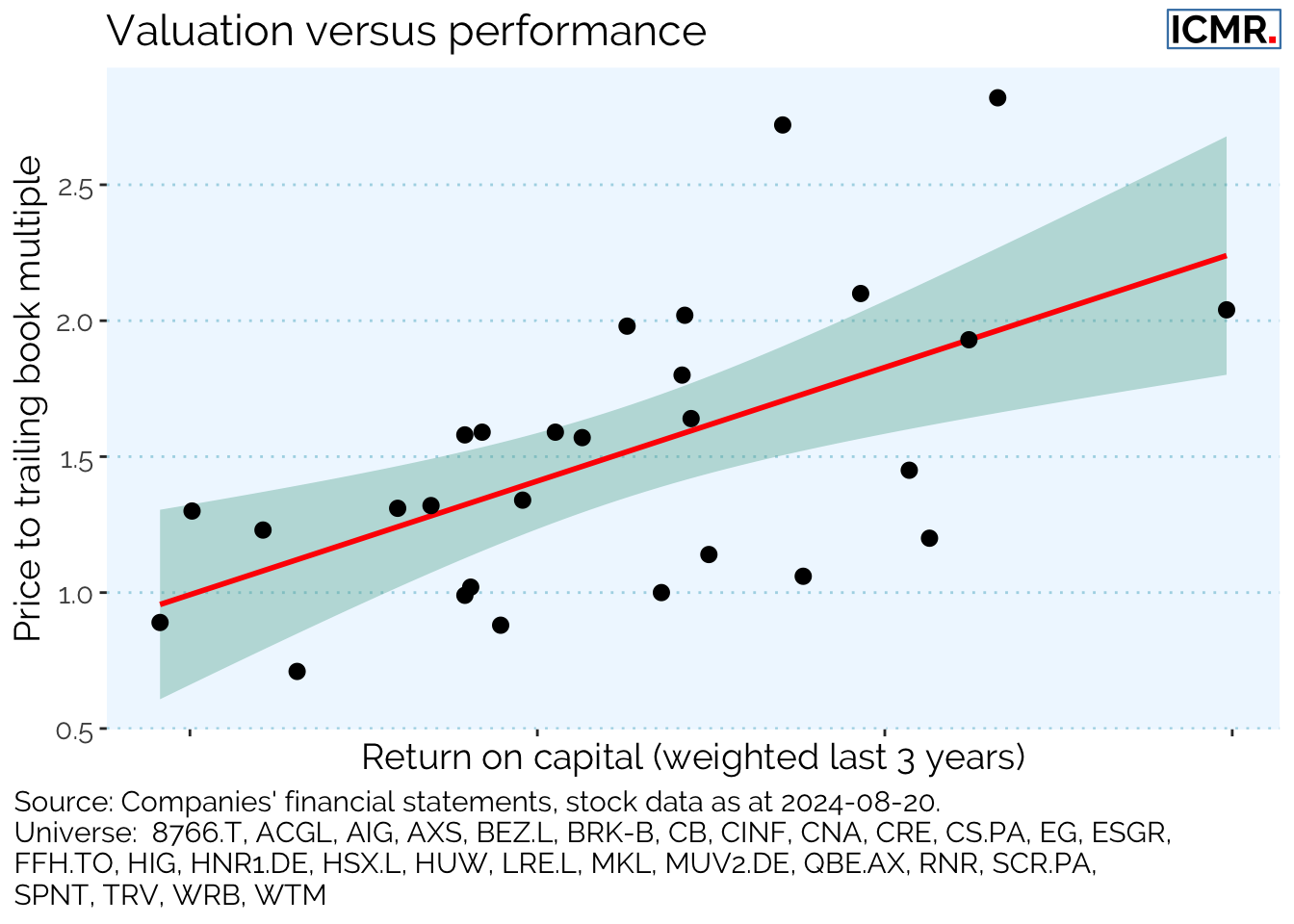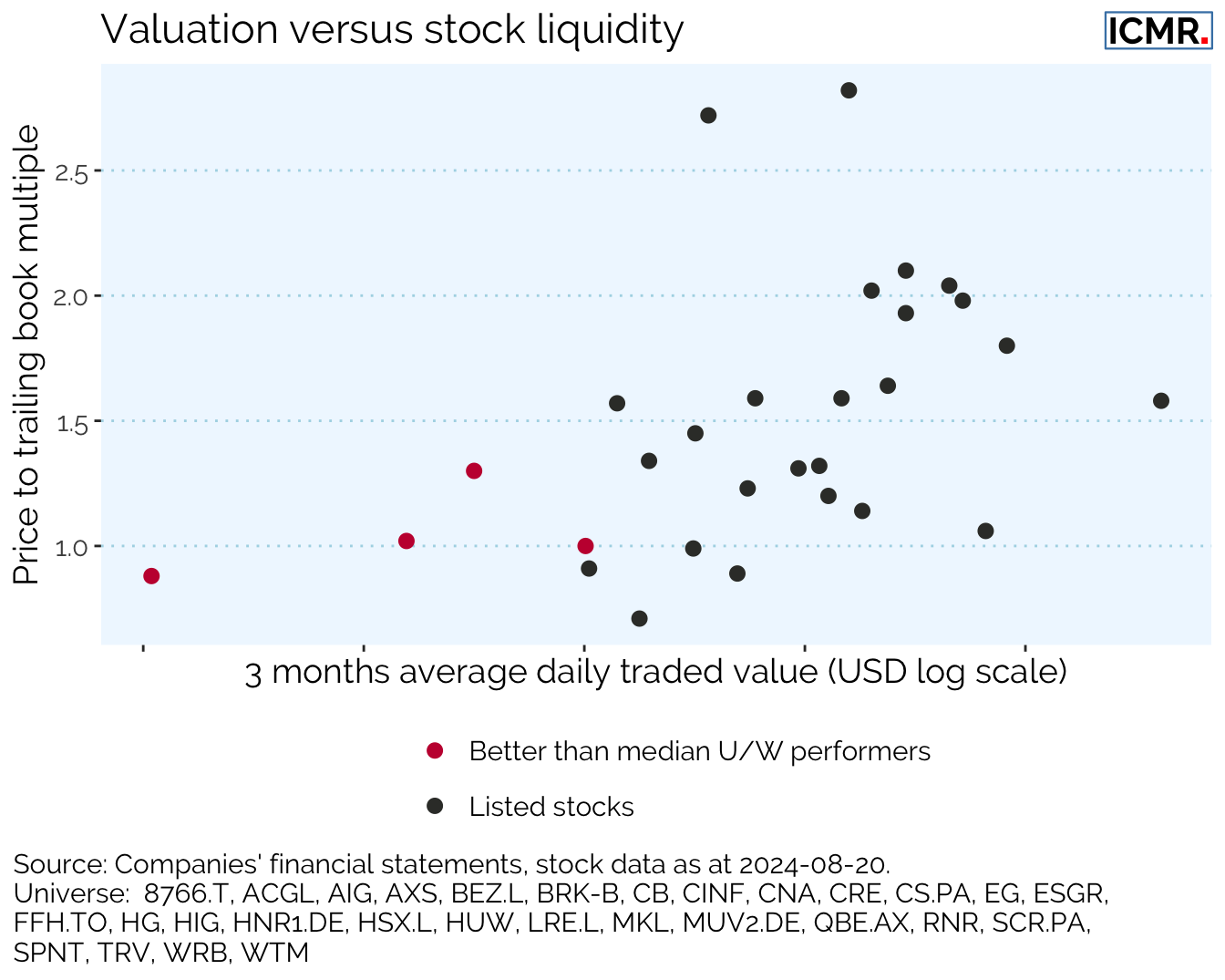Understanding when listing can be a help or a hindrance
Liquidity versus value creation for listed companies
For many investors, the ultimate goal of a (re)insurance investment is a public listing. As previous analyses have shown, the market tends to reward superior underwriting and returns on equity with higher price-to-book multiples.

But what of the outliers? Is a relatively low price to book valuation multiple driven solely by inferior relative underwriting? One answer lies in the liquidity of listed stocks, being the average traded value over, say, a 3 month period.
Many investment funds have minimum requirements for stock liquidity to avoid influencing prices. Stocks that fall below this threshold may require to be sold, potentially further suppressing their share price, regardless of their underlying underwriting performance.
As can be seen below, the stocks with the lowest liquidity on the left of the chart have relatively low price to book valuations, despite many of them delivering much better than median underwriting performance

This raises the question: if a public listing is the intended destination for a (re)insurance company, what are the real advantages, especially if the company doesn’t plan to use capital markets for growth?
Listing comes with additional governance and reporting costs. Unless it is part of a growth strategy, it may not be the most advantageous option. This could explain why, despite record-high stock market indices, including RISX, new (re)insurance IPOs remain scarce.